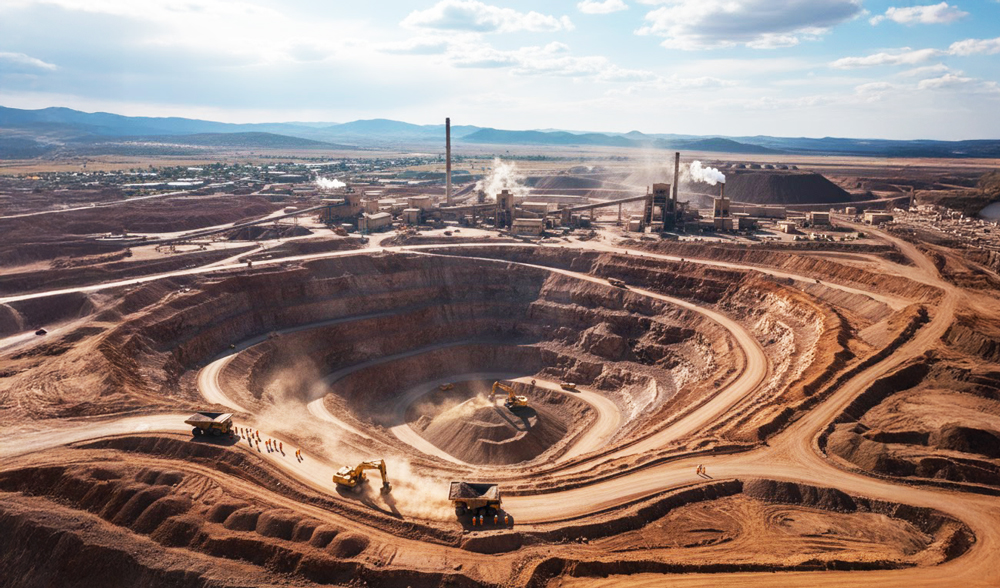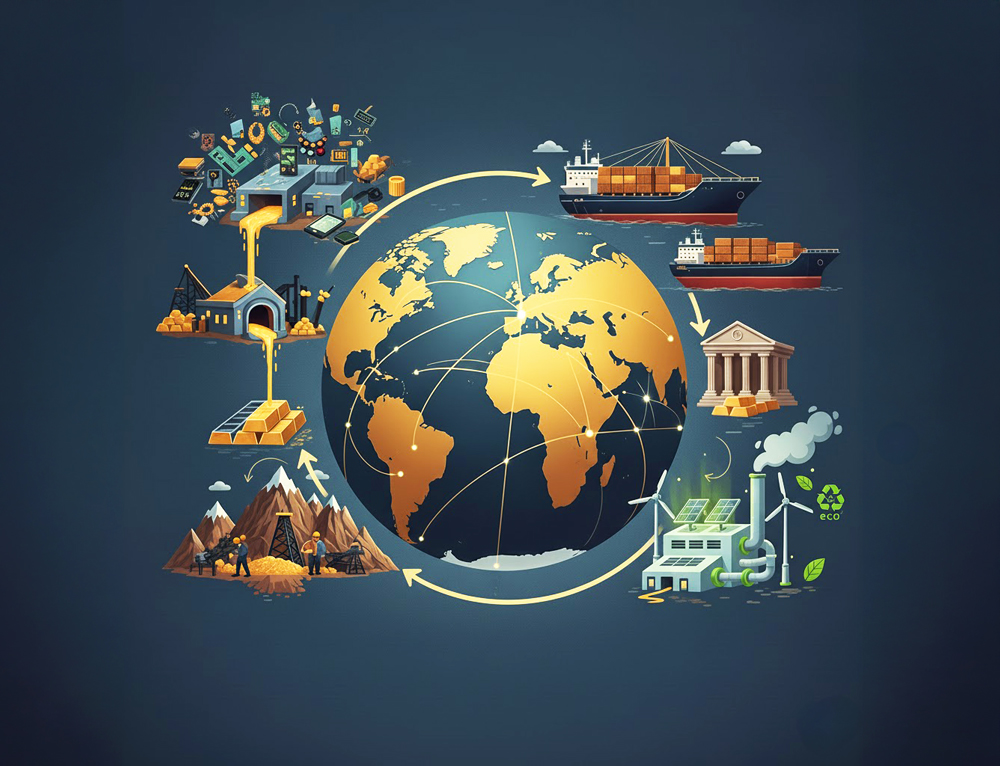Gold has long symbolized wealth, beauty, and stability — but beneath its gleam lies a complex network of extraction, refining, and distribution that comes with significant environmental and ethical implications. Understanding gold’s supply chain reveals not only how this precious metal reaches global markets but also the environmental cost that shadows its journey.
The Global Gold Supply Chain
From mine to market, gold passes through a multi-stage process involving exploration, extraction, refining, and trading. Each stage introduces unique challenges in traceability and sustainability.
- Exploration & Extraction: Most of the world’s gold comes from large-scale industrial mines located in regions like China, Australia, Russia, and Africa. Artisanal and small-scale mining (ASM) also contributes nearly 20% of global output, often with little oversight or regulation.
- Processing & Refining: Once extracted, ore undergoes crushing and chemical treatment — typically cyanidation — to separate pure gold from rock and impurities.
- Trading & Distribution: After refining, gold enters a global web of traders, central banks, and jewelry manufacturers. Much of this trade flows through major hubs like Switzerland, Dubai, and London.
While technology and logistics make the process more efficient, it remains energy-intensive and environmentally demanding.
Environmental Consequences of Gold Mining
Gold mining is among the most environmentally disruptive extractive industries, primarily because of the resources required to extract even a small amount of metal.

- Deforestation and Habitat Loss: Large-scale open-pit mining can devastate ecosystems, clearing forests and displacing wildlife. In regions like the Amazon and West Africa, illegal mining has accelerated biodiversity loss.
- Water Pollution: Mercury and cyanide, common in gold processing, contaminate waterways, impacting both aquatic life and human health downstream.
- Carbon Emissions: Mining operations depend heavily on fossil fuels, contributing significantly to greenhouse gas emissions.
- Waste Management: For every ounce of gold produced, several tons of waste rock are generated, often stored in tailing ponds that pose long-term risks if improperly maintained.
Ethical and Social Dimensions
Beyond the environment, gold mining often intersects with complex social issues. In many developing nations, ASM provides livelihoods but also exposes workers to hazardous conditions and exploitative labor practices. Transparency and certification initiatives such as the Responsible Gold Mining Principles (RGMPs) and Fairmined Standard aim to address these issues, promoting traceable and responsibly sourced gold.
The Push for Sustainable Gold
Growing investor and consumer awareness has driven innovation toward cleaner and more ethical gold production. Major refiners and jewelers are increasingly adopting ESG (Environmental, Social, and Governance) criteria and blockchain-based traceability tools to track gold from mine to market.

- Recycled Gold: Roughly 25–30% of the annual gold supply now comes from recycled sources — reducing the need for new mining.
- Green Refining Technologies: Some refiners are experimenting with cyanide-free processing methods and renewable power for extraction.
- Certification Programs: Labels like Fairtrade Gold and the London Bullion Market Association’s (LBMA) Responsible Sourcing Program help ensure ethical supply chains.
The Road Ahead
Sustainability in gold mining remains an ongoing challenge. While industry reforms and technological advancements show promise, meaningful progress depends on stronger regulation, enforcement, and international cooperation. Investors and consumers alike play a role by prioritizing responsibly sourced gold and holding companies accountable.
MarketMind Insight – Gold’s true value extends beyond its price per ounce. Understanding where it comes from — and at what cost — is essential for investors seeking not just profit, but purpose in an evolving global economy.

Leave a Reply